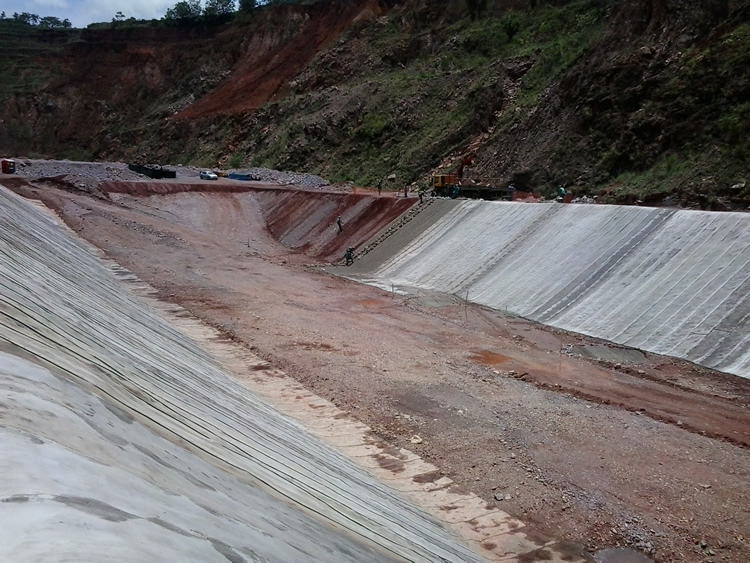

In October 2015, a Concrete Canvas® GCCM (Geosynthetic Cementitious Composite Mat) composite barrier was used to line a newly constructed drainage lagoon at Votorantim Metais Zinco mine in Vazante, Minas Gerais, Brazil. The site needed to transport alkaline mine water through a series of drainage ditches—also to be lined—to the lagoon where the water would be treated.
(EDITOR’S NOTE: See slideshow at end of story.)
Sites like this had used concrete-based solutions in the past; but, with the rainy season having already begun, a solution such as shotcrete was not possible. The specification of a geosynthetic-concrete composite barrier system gave the site operators a strong lining system that could be installed efficiently even in the inclement conditions.
Concrete Canvas® (CC) is a flexible, concrete-impregnated geosynthetic fabric that hardens on hydration to form a thin, durable, waterproof and fire-resistant concrete layer. It is, essentially, concrete on a roll. The GCCM barrier can be installed at a rate of 200 m2/hour and it is available in portable rolls for applications where site access is limited. The concrete is pre-mixed, so there is no need for mixing, measuring or compacting: just add water.
In Minas Gerais, the CC solution not only made the installation in rainy conditions possible but negated the health and safety risks associated with shotcrete application (e.g., rebound). The rolled good was also much easier to transport to the remote mining site.
SPI Engenharia e Representações supplied CC to the project.
COMPOSITE BARRIER INSTALLATION
At the mine, vegetation was removed and the lagoon slopes were graded and compacted. Bulk rolls of 13mm thick Concrete Canvas® (CC13TM) were mounted onto a spreader beam and unrolled down the lagoon slope faces, before being cut to specific profile lengths.
Subsequent layers overlapped the previous by 100mm and pegs were inserted through the overlaps at the crest. Everbuild Clear Fix, a hybrid polymer grab adhesive, was used to join the material. The joints were compressed to ensure the optimal bond. Hydration was achieved using a water truck and hose with spray nozzle attached.
Of significant importance, the CC approach accommodated pipe protrusions, providing safe, efficient seals around them. The geosynthetic-concrete composite barrier was also able to be installed during rain and in high heat, with site conditions reaching up to 42°C (108°F).
In total, 7000 m2 of CC13TM were installed in just 2 months. Project estimates, based on experience and the site’s characteristics, suggested that shotcrete would have required more than 4 months of work to cover the drainage ditch and lagoon system.
Votorantim Metais noted that it was very happy with the site, including 63 days of accident-free liner installation works. The company has planned to make the barrier system solution a project reference within its corporation.
[metaslider id=49948]
Learn more at www.concretecanvas.com.












Great application, with client very happy with the result!